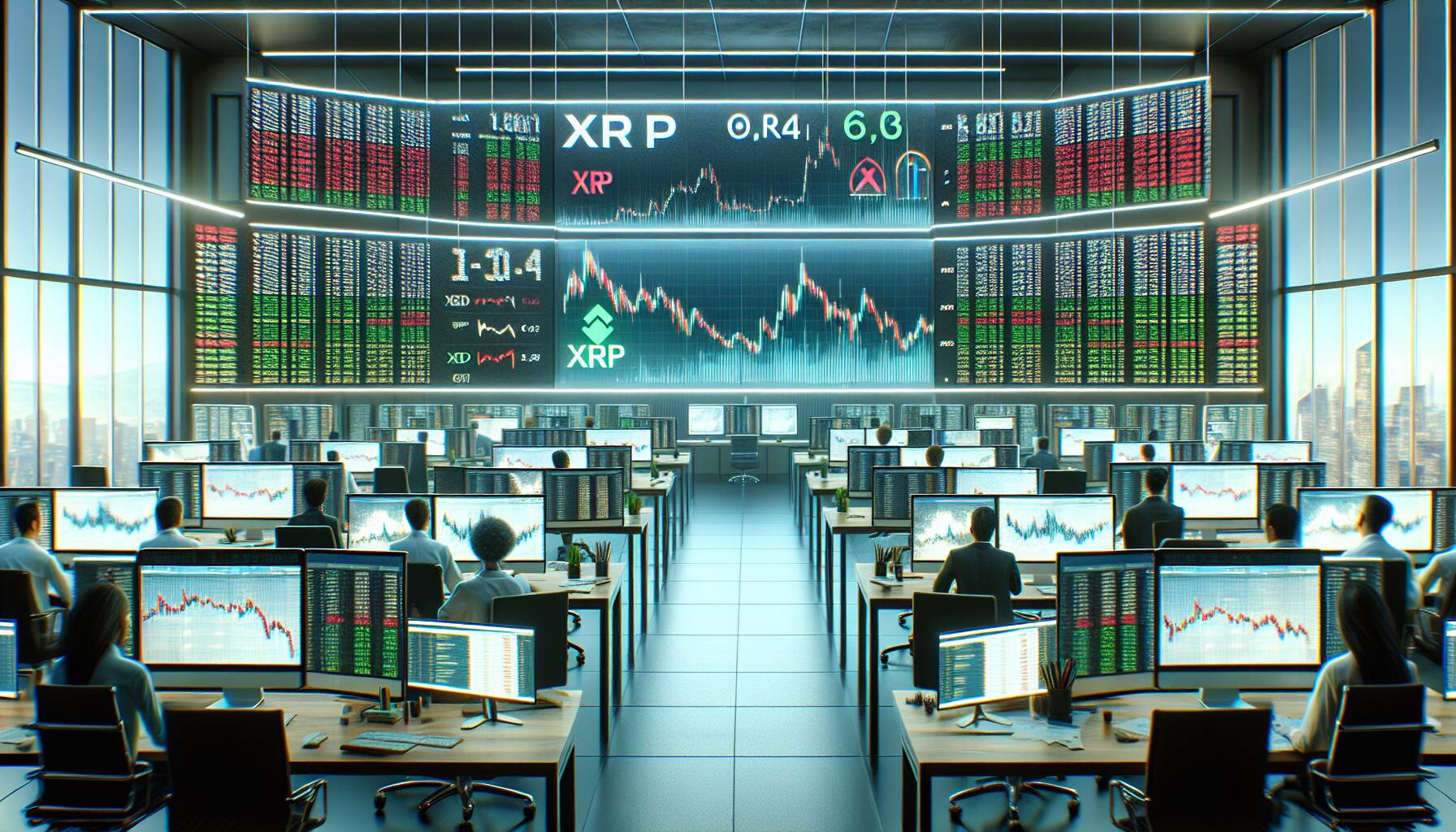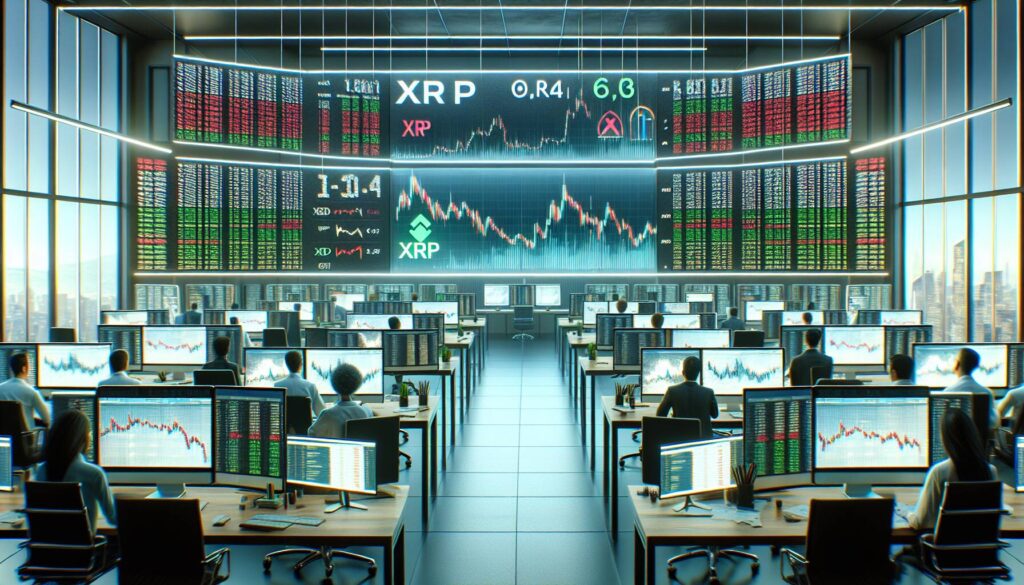The cryptocurrency landscape takes a significant turn as XRP futures officially commenced trading on the Chicago Mercantile Exchange (CME) this past Monday. Marking a milestone, these are the first regulated futures in the U.S. that track XRP prices, offering traders two contract sizes—2,500 XRP and 50,000 XRP. Both contracts will be cash-settled and linked to the SME CF XRP-Dollar Reference Rate, which reflects XRP price fluctuations daily at 4:00 p.m. London time.
The CME is no stranger to cryptocurrency futures; it has previously introduced products for Bitcoin, Ethereum, and Solana, among others. Notably, Solana futures had a modest entry, drawing only $12.3 million in notional daily volume on their first day—figures that pale in comparison to the more robust launches of Bitcoin and Ethereum futures.
“CME-traded XRP futures are now *live*,” said Nate Geraci, President of ETF Store, indicating enthusiasm for the futures market. “CFTC-regulated contracts on XRP. Spot XRP ETFs only a matter of time.”
As XRP’s price experienced a decline of 3.45% in just 24 hours prior to this announcement, the introduction of regulated futures could play a pivotal role in shaping the cryptocurrency’s market landscape. This new development raises hopes for a forthcoming approval of a spot XRP exchange-traded fund (ETF), currently under scrutiny by the Securities and Exchange Commission (SEC). Numerous U.S. issuers have submitted proposals for such funds, although an official decision remains pending.
The former SEC chair, Gary Gensler, hinted at the importance of regulated futures in easing pathways toward the approval of a spot ETF, citing them as a foundational aspect in the agency’s past decisions to authorize spot Bitcoin and Ethereum ETFs.

XRP Futures Launch on CME: Key Highlights
The recent introduction of XRP futures on the Chicago Mercantile Exchange could have significant implications for investors and the broader cryptocurrency market. Here are the essential points to consider:
- First Regulated XRP Futures: XRP futures are now available on the CME’s derivatives platform, marking a milestone in regulated trading of XRP in the U.S.
- Contract Sizes: Traders can choose between two contract sizes:
- 2,500 XRP
- 50,000 XRP
- Cash-Settled Contracts: Both contracts will be cash-settled, providing a straightforward trading experience without the need for physical delivery of XRP.
- SME CF XRP-Dollar Reference Rate: The contracts will be based on the SME CF XRP-Dollar Reference Rate, tracking XRP prices daily at 4:00 p.m. London time.
- Impact on Spot XRP ETF Review: The introduction of regulated futures may positively influence the approval process of a spot XRP exchange-traded fund (ETF), which is currently under review by the SEC.
- Correlation with Other Futures: CME also offers futures for other cryptocurrencies like Bitcoin (BTC), Ethereum (ETH), and Solana (SOL), enhancing the overall market structure and potential for investors.
- Regulatory Backing: The presence of CFTC-regulated contracts on XRP could lend credibility and support to future ETF applications, following historical precedents set with Bitcoin and Ethereum approvals.
- Market Volume Comparisons: Initial trading volumes for SOL futures were modest compared to Bitcoin and Ethereum, indicating varying levels of market interest and potential for XRP futures.
“CME-traded XRP futures are now *live*,” stated Nate Geraci, President of ETF Store, indicating a significant development for XRP market participants.
Understanding these aspects may help investors navigate trading strategies and regulatory landscapes, potentially impacting their investment decisions related to XRP and the wider cryptocurrency space.
XRP Futures Launch: A Game-Changer or Just Another Trend?
The introduction of XRP futures on the Chicago Mercantile Exchange (CME) is a noteworthy event in the landscape of cryptocurrency trading. This development positions XRP alongside established cryptocurrencies like bitcoin and ethereum, both of which already boast regulated futures markets that have successfully attracted a plethora of traders. By enabling cash-settled contracts with two sizable trading options, CME is tapping into the growing demand for diverse investment opportunities within the digital asset space.
One major advantage of XRP futures is their regulation under CFTC guidelines, which adds an extra layer of security and legitimacy for traders. This could potentially reassure institutional investors who have been hesitant in the past due to the unregulated nature of many cryptocurrency assets. Furthermore, the establishment of these futures contracts may pave the way for a spot XRP exchange-traded fund (ETF), a development that many market participants and analysts, like Nate Geraci, are already speculating could be just around the corner. The approval of a spot ETF could open floodgates of investment and significantly elevate XRP’s market presence.
However, this launch does not come without its drawbacks. For one, XRP’s price has recently declined by over 3%, indicating that the market sentiment may not yet fully support this new trading vehicle. Initially low trading volumes—exemplified by CME’s recent performance with SOL futures—also highlight that there might be slow adoption or demand from traders who are still gauging the broader implications of XRP’s current legal standing, particularly the ongoing scrutiny from the SEC.
The launch of regulated futures is likely to benefit institutional investors looking for a safer entry into the cryptocurrency market, providing them with a means to hedge their positions without directly holding the asset. On the flip side, retail traders may face heightened competition as large institutional firms enter the fray, leveraging their resources and market knowledge. Additionally, the SEC’s looming decisions on ETF approvals create an air of uncertainty; if the agency decides against the spot XRP ETF, it could dampen enthusiasm in this newly minted futures market.
With the evolving landscape of cryptocurrency trading, the introduction of XRP futures holds the potential to serve both as a catalyst for growth and a possible source of confusion among investors. The balancing act of optimism and skepticism in this marketplace will be critical in determining the long-term viability and acceptance of XRP in the broader financial ecosystem.

















